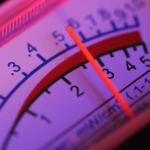The “gauss” is a unit of measurement used to quantify the strength of a magnetic field. Named after the German mathematician and physicist Carl Friedrich Gauss, it helps in understanding how strong a magnetic field is in a given area.
To put it simply, imagine a magnetic field as the area of influence around a magnet, where its magnetic force is felt. The strength of this field at different points is what the gauss measures. For example, the Earth’s magnetic field is quite weak, typically around half a gauss, while small fridge magnets can be hundreds of times stronger, often measured in hundreds of gauss.
In the scientific community, gauss has been largely replaced by the tesla, a unit in the International System of Units (SI). One tesla is equal to 10,000 gauss, and it’s a more commonly used unit in modern scientific work. However, gauss is still used in some contexts, particularly in engineering and in older scientific literature.
Measuring the strength of a magnetic field in gauss is typically done using an instrument called a gaussmeter or a magnetometer. Here’s a simplified explanation of how it works:
- Gaussmeter/Magnetometer: This device contains a probe, which is placed in the magnetic field to be measured. The probe has a material or sensor that reacts to the magnetic field.
- Sensor Reaction: Depending on the type of gaussmeter, the sensor might work in different ways. Some use a Hall effect sensor, which generates a voltage when exposed to a magnetic field. The strength of this voltage is proportional to the strength of the magnetic field.
- Data Processing: The gaussmeter processes the sensor’s response to calculate the magnetic field’s strength. This calculation often involves calibration against known standards to ensure accuracy.
- Display of Measurement: The measurement is then displayed on the device, typically in units of gauss or tesla.
It’s important to note that the accuracy of the measurement can depend on several factors, including the quality of the gaussmeter, the environmental conditions, and the nature of the magnetic field being measured (like its size, shape, and whether it’s uniform or varies in strength across different points).








